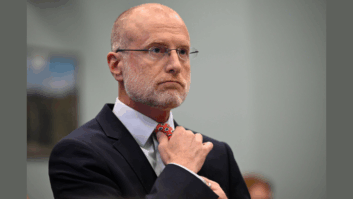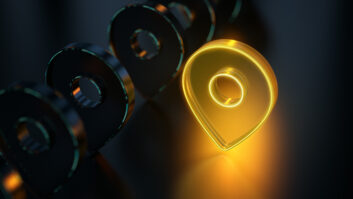If you are ready to take a break from high-speed, complex digital systems, consider becoming a “rock hound” and constructing a crystal radio, one of the earliest forms of receivers.
For close to 100 years companies have been making and selling crystal radios. Many people in radio and other technical fields credit crystal radios for sparking their interest in electronics. Possible circuits and construction techniques range from extremely simple to quite complex.
With many advances in technology, such as ICs, computers and digital electronics, interest in these radios seemed to decline for many years. By connecting many people and companies, the Internet has spawned a revival of interest in crystal radios.
New and old crystal radios, in every price range, continue to appear on eBay. The use of 21st century tools has added a new spin – and additional insights – to one of the oldest receiver systems.
Resources
Web Resources for Crystal RadiosRamsey Electronics, following in the steps of many classic transmitter companies, offers broadcast equipment and crystal radios.
The Xtal Set Society is a leading source of books on crystal set construction. The site is a valuable source of information. They also sponsor Rap ‘n Tap, a Web site and a newsgroup.
To appreciate the underlying sophistication of crystal radios, look at the site of Ben H. Tongue, a founder of Blonder-Tongue.
Although they no longer offer crystal radios, Philmore Manufacturing Co., which is now part of L.K.G. Industries Inc., offers a range of parts, cables, kits and tools for professionals and hobbyists.
Modern Radio Labs offers a variety of traditional crystal radio parts and books.
Known as a source for tubes, Antique Electronic Supply also offers a small assortment of crystal radio repair parts, as well as several books on the subject.
www.tubesandmore.comIn the early days of radio, companies that operated stations and made transmitters often manufactured receivers. Many early crystal radios carried well-known names such as Marconi, Westinghouse and Radio Corporation of America.
Over the years, parts and complete sets were sold by small companies and industry leaders including Federal, Freed Eisemann, Grebe, General Electric and Steinite. Kit makers and toy manufacturers such as Heathkit and Remco offered simple crystal radio kits.
Philmore Manufacturing is the company most commonly associated with crystal radios. Located in the New York area for many years, it manufactured complete sets, parts and kits from the 1930s through the 1950s. The company no longer offers crystal sets but is still in business following a change in ownership and a move to Illinois.
If you are trying to restore a classic Philmore or other crystal radio, replacement parts sold by Antique Electronic Supply in Tempe, Ariz., may be helpful.
Today several companies still offer crystal radios, kits and parts. These range from children’s toy to science project, from simple kits to expensive reproductions of classic, early radio masterpieces. In fact, there is one modern supplier of broadcast equipment that also sells crystal radios. Ramsey Electronics of Victor, N.Y., sells a variety of gear, such as transmitters, production audio systems and FM antennas, aimed at low-power broadcasters. They also offer their model CS2 Crystal Radio Kit for $9.95, a wonderful (and economical) introduction to crystal radios.
If you are interested in building or learning about traditional crystal radios, try surfing to the Web site for Modern Radio Labs. The company offers a collection of crystal radio books and claims to be “America’s Oldest Radio Manufacturer & Publisher,” in business since 1932.
By a whisker
In its most simple form, a crystal radio consists of a diode, tuning circuit and audio transducer.
Possible diodes range from simple home-made open detectors to the latest high-frequency semiconductors. Open detectors consist of a crystal and a contact wire.
The crystal typically is some type of mineral (acting as a semiconductor) mounted or held in a metal frame. Early radio builders embedded a piece of “ore” in a small cylinder of solder or lead, which was then held by clips or screws. The mineral “ore” was usually galena or pyrite. Today most stores that sell rocks and minerals will have a variety of acceptable crystal materials.
A spring-like wire called a cat’s whisker contacts the mineral material. Only the point or end of the wire actually contacts the mineral. (If you have ever seen a diagram of early “point contact” diodes, it is obvious they are just miniaturized versions of the open crystal detector.) Moving the cat’s whisker over the mineral’s surface to find the best spot requires a little patience and skill. Different contact positions can change signal strength, selectivity, distortion and other factors.
Today’s crystal radio builders have a choice of using the classic open detector or a diode. Open detectors can be purchased or built from scratch. Electronics parts distributors offer a broad selection of diodes. Discussions and articles compare types of diodes, based on their construction, frequency rating or operating voltage. Builders opting for the diode generally have started with a type 1N34 or similar germanium diode. Other popular choices include Schottky and microwave diodes.
Some builders experiment with different wire gauges and alloys for the cat’s whisker. There must be a small amount of pressure to maintain proper contact with the crystal. Normal copper wire is too soft for an effective cat’s whisker. Bronze alloys are popular in this application.
An interesting variation on the crystal radio, known as a foxhole radio, used a blued double-edge razor blade and a pencil lead in place of the crystal and cat’s whisker. The name refers to the fact that GIs could build and operate these easily, using materials readily available to them in the field. This unlikely combination of a pencil and the razor’s surface coating forms a semiconductor junction.
Join up
Progressing to more sophisticated crystal radios becomes challenging. In this realm, you may develop new or additional understanding of radio technology. The crystal radio Web sites and newsgroups can challenge your knowledge of transmission, antennas, modulation, detectors and receivers.
A quick Web search for “crystal radio” produces many organizations and sources of information. A leading provider of construction and other information is the Xtal Set Society or XSS. They publish a newsletter and books on crystal set construction. XSS also sponsors “Rap ‘n Tap,” an online, crystal radio discussion/newsgroup. These postings reveal a broad range subjects that will also interest radio professionals.
The online discussions can get quite technical, involving various theories about tuned circuits, detectors, antennas, interference, ground systems and signal strength. Reading these discussions and attempting the proposed circuits may give you new insights into factors that affect what your listeners hear.
John Ramsey, founder of Ramsey Electronics, suggests looking at the crystal set as “a big matching circuit that matches the EM wave to the earpiece. You want to maximize it for maximum power transfer and along the way you want to get some selectivity too.”
To appreciate the complexity of even the simplest radios, take a look at the Web site of Ben H. Tongue, a founder of Blonder-Tongue, a well-known provider of broadcast, cable and consumer communications equipment. Under the title “Crystal Radio Set Systems: Design, Measurement and Improvement” you will find many articles on theory and analysis. Some of the covered topics include:
- Improving sensitivity, distortion and selectivity.
- Determining the best diodes and audio transformers.
- Detector simulations using the SPICE computer program.
- A new diode detector equivalent circuit.
- Measuring sensitivity (insertion power loss), selectivity and input/output impedance.
A different perspective on building crystal radios is offered by Ramsey.
“I think the people who are in radio as a passion, rather than a simple profession to make money, are more prone to be involved in crystal radios. It is just the fascination of being able to whip something together with so few parts. I just want to see what I can do with the barest minimum” of parts.
If you want to understand radio or just return to a simpler time and technology, try building and operating a crystal radio.
Former broadcaster Neil Lewbel is a consultant focused on developing new companies and products in the technology and communications fields.







